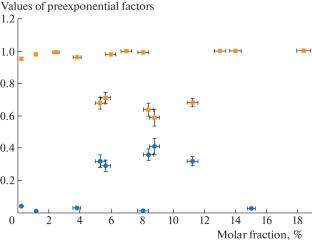利用扩散 NMR 驰豫确定溶液中聚合物分子的形状和尺寸
IF 1
4区 工程技术
Q4 MECHANICS
引用次数: 0
摘要
摘要 提出了一种确定溶液中聚合物分子尺寸和形状的新方法,并在实验中得到了验证。该方法基于对原子核横向磁化强度弛豫的测量。实验证明,拉长分子的自旋回波衰减信号包含两个随时间呈指数衰减的项,这两个项对应于两个相差约 2 倍的扩散系数。近球形分子的信号只包含一个指数。本文章由计算机程序翻译,如有差异,请以英文原文为准。


Determination of the Shape and Dimensions of the Polymer Molecules in Solutions Using Diffusional NMR Relaxation
A new method of determining the dimensions and shapes of polymer molecules in solutions is proposed and verified in experiments. The method is based on the measurements of the relaxation of the transverse magnetization intensity of nuclei. It is established that the decaying signal of the spin echo from elongated molecules contains two terms exponentially decaying with time, which correspond to two diffusion coefficients differing by a factor of about two. The signal from molecules with a near-spherical shape contain only one exponent.
求助全文
通过发布文献求助,成功后即可免费获取论文全文。
去求助
来源期刊

Fluid Dynamics
MECHANICS-PHYSICS, FLUIDS & PLASMAS
CiteScore
1.30
自引率
22.20%
发文量
61
审稿时长
6-12 weeks
期刊介绍:
Fluid Dynamics is an international peer reviewed journal that publishes theoretical, computational, and experimental research on aeromechanics, hydrodynamics, plasma dynamics, underground hydrodynamics, and biomechanics of continuous media. Special attention is given to new trends developing at the leading edge of science, such as theory and application of multi-phase flows, chemically reactive flows, liquid and gas flows in electromagnetic fields, new hydrodynamical methods of increasing oil output, new approaches to the description of turbulent flows, etc.
 求助内容:
求助内容: 应助结果提醒方式:
应助结果提醒方式:


